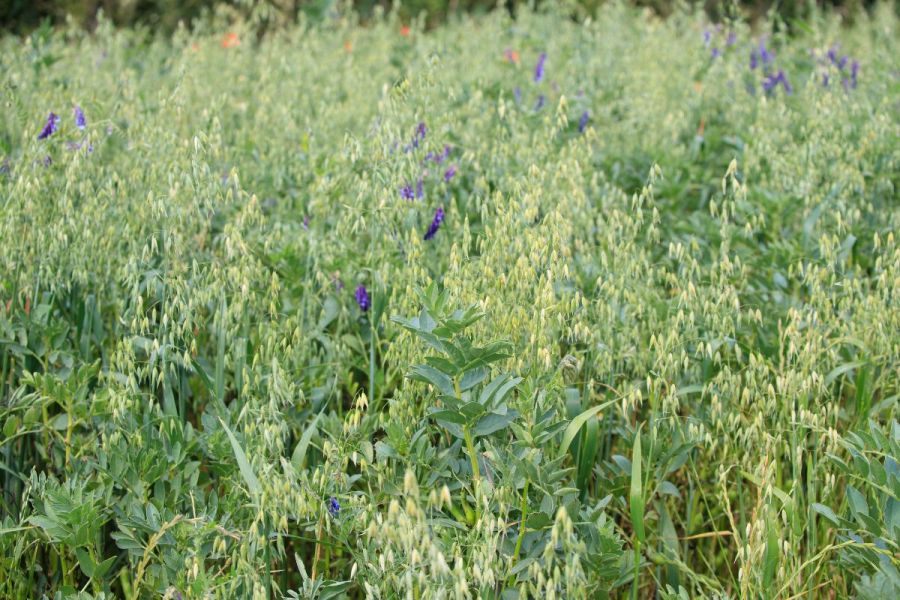Cover cropping, intercropping, reducing nitrogen and the value of compost in regenerative agriculture were among the topics researchers discussed during BASE-UK’s annual conference. CPM picks out some key messages.
“If knowledge isn’t shared, it’s lost.”
By Mike Abram
If any conference is set up for learning both from researchers and farmers, it’s BASE-UK. Its 10th anniversary edition attracted 160 delegates, all with a keen interest in regenerative or conservation agriculture.

United in purpose, the BASE chairmen of Ireland, Norman Dunne (left); BASE founder Frederic Thomas (middle) representing France and Edwin Taylor, chairman BASE UK were all present at the 10th anniversary conference.
Packed full of insights into what and how to make key aspects of conservation agriculture successful from a succession of excellent speakers, it’s also the conversations that happen in the breaks, at the bar and over dinner that provide full value for attendees.
As one of the speakers, LEAF’s Vicky Robinson – who has researched knowledge exchange for her recent Nuffield Scholarship – highlighted, it’s those conversations where tacit knowledge, often undervalued, is discussed in a trusted environment that breakthrough moments begin.
“If knowledge isn’t shared, it’s lost,” she said, quoting Alfred Grand, a regenerative farmer from Austria whom she met during her travels.
And for complex nature-based solutions and biological processes, knowledge exchange is vital. “If you want to drive change, it has to be disruptive,” she pointed out.
Starting with some basics, NIAB’s Dr Elizabeth Stockdale pointed out there was no longer a good reference method for measuring soil organic carbon, after the Walkley-Black method was banned due to its use of some carcinogenic materials.
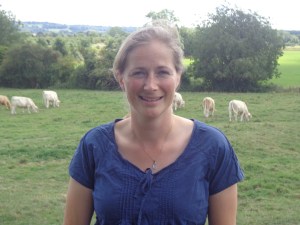
It’s those conversations where tacit knowledge, often undervalued, is discussed in a trusted environment that breakthrough moments begin, said Vicky Robinson.
That left a choice between loss on ignition – the difference in soil weight before and after it has been ignited – or the Dumas method, which measures organic carbon and is then converted to organic matter.
“The two do correlate well, but it’s not a one-to-one line,” she said. “In general, you get higher estimates of organic matter if you test with loss on ignition. You also get slightly different answers from different laboratories.”
So which should you use? “If you’re going to start measuring organic matter, what you shouldn’t do is skip between methods or labs. That will mean if assessments change over time, you know it’s a real result rather than possibly due to the method or lab changing.
“Either measurement will work perfectly well, but if I was setting up to measure organic matter on farm for the first time now, I’d use the Dumas method, which is slightly more expensive.”
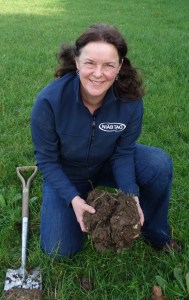
Elizabeth Stockdale’s message was that if you’re going to start measuring organic matter, you shouldn’t skip between methods or labs.
Another consideration, especially for those considering trading carbon credits, is that the Dumas method is the only one of the two that’s compliant with the recently announced Soil Carbon Code, said Becky Willson, technical director for Farm Carbon Toolkit.
“It has higher precision as it measures elemental carbon and not just organic matter, this means it’s important for those on chalky soils to ensure you measure your inorganic carbon as well,” she said.
The downside to Dumas is a “miniscule” amount of soil is analysed, which could reduce the ability to take account of variation across a field. “You may have to take multiple samples to best reflect that variation,” she said.
Looking at soil as a growing medium, plant roots are the key driver of improving soil health, according to Joel Williams, an independent soil consultant with Canada-based Integrated Soils.
While roots and shoots are linked and work together, the driver of nutrient cycling, improving physical structure, porosity and feeding soil biology are the roots. “So when thinking about cover crops, don’t be fooled by solely judging the success of it by how it looks above ground,” he said. “We must always judge success by the roots.”
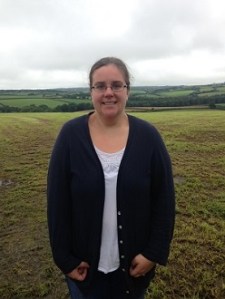
For those considering trading carbon credits, the Dumas method is the only one that’s compliant with the recently announced Soil Carbon Code, said Becky Willson.
The invisible part of the equation is the root exudates – sugars, carbohydrates, amino acids and proteins that are excreted by roots, which are the preferred food source for soil organisms.
“This is how we can easily and rapidly grow soil biomass,” adds Joel.
Analysis of 60 different research studies showed cover crops on average increased the abundance soil microorganisms by 27%, and microbial activity by 22%. But microbial diversity was only increased by 2-5%, he noted.
“So you’re not increasing soil microbial diversity by growing cover crops much, but you are activating what’s there more widely.”
Whether to grow single or multispecies cover crops will depend on what you’re trying to achieve, advised Joel. If it’s just one specific objective, then a single species might be best as some plants are better than others at specific things, such as legumes for nitrogen fixation, or brassicas and buckwheat for phosphorus scavenging.
Multispecies cover crops are likely better where there are multiple goals, while they also potentially would help cover problems with establishment of species within the mix, he noted.
“So it depends on what you’re trying to achieve – there’s no magic number. Although it can add to cost, so there’s an economic consideration.”
But with diversity the important feature is functional diversity, he stressed. “If I had the choice between a three-way mix of a cereal, legume and brassica versus an eight-way mix of different legumes, I would choose the three-way mix.
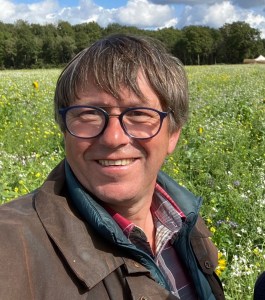
According to Frédéric Thomas, putting farmyard manure on a cover crop is best because it brings food to the soil and when you feed the soil, you need to do so with quantity, quality and continuity.
“It has functional diversity – different species offering different specific functions. It’s not diversity per se, but the function of those species.”
With the potential payments now available for companion cropping through the Sustainable Farming Incentive, Joel shared some data about some of the benefits. For example, a meta study of 100 trials with 196 direct comparisons found that in 79% of cases, growing intercrop or companion crops resulted in a decrease in disease pressure, with a further 18% showing no difference and only 3% an increase.
“So the odds are on your side when you step away from a monoculture and integrate more diversity, you lower disease burdens.”
With pests, this time comparing 153 studies and 546 direct comparisons, 68% of the time pest pressure declined, with 24% neutral and 8% increasing pressure, he said. “And with weeds, we have similar numbers – an 86% a decline in weed pressure when growing two or more crops or companions.
“I’m not saying you’re going to completely control weed, diseases and pests, but by stepping away from a monoculture you’re making it harder for them just through the inherent design of your production system.”
Joel also shared research examples showing how legume/cereal mixes could share nitrogen in real-time through amino acid root exudates if root to root contact was close or through mycorrhizal fungi networks, as well as when the legumes die or decay.
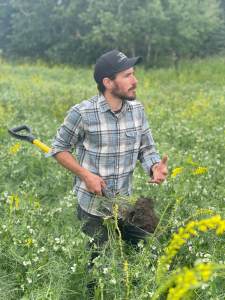
It’s the roots that are the driver of nutrient cycling, improving the soil’s physical structure, porosity and are responsible for feeding soil biology, said Joel Williams.
“It’s not going to be huge amounts [shared in real-time], especially in high yielding areas like the UK, but legume cereal intercrops have an opportunity to be a piece of your nitrogen puzzle and provide some nitrogen fertility.”
Current varieties of companion or cover crops are typically bred for different purposes, he suggested.
“For example, we haven’t bred legumes specifically for the purpose of sharing nitrogen – they’re probably the ones you would also grow as a monoculture to be productive.
“So if we breed varieties that were better at sharing nitrogen, what percentage could it make up of the nitrogen requirement of a cereal? I think there is an opportunity to increase this if it’s a breeding goal.”
It’s already known that small leaf clovers share more nitrogen than large leaf clovers, as the small leaf clover has less need for nitrogen for its little leaf, and therefore has more to share, he said.
The same applied to cover crops. “Cover cropping is still in its infancy. I think the next generation of cover crop seed will be specific varieties, primarily bred for their roots but maybe other functions too, and their potential will be far greater than it is now.”
Many growers only look at how much nitrogen the initial following cash crop gets back from a cover crop, said French farmer, Frédéric Thomas, a leading expert in conservation agriculture and co-founder of BASE-France. “But it’s an investment.”
Typically, growers should expect 8-10kgN/t of cover crop dry matter back in the next crop, he suggested. “With the price of fertiliser currently, if you grow around 4t/ha of dry matter in the cover crop, which is quite easy to reach, you get most of your money back in terms of nitrogen in the first crop.
“So it’s an investment where you get a return in the first year at current fertiliser prices, and then you get all the other economical returns in time – it’s a very secure investment.”
In France, growers can use a tool “Méthode d’estimation des Restitutions par les cultures intermediaries” (MERCI) developed by Arvalis, INRA and other partners to estimate the nutrients available for the next crop. It either uses weights of cover crop species taken shortly before destruction in the field or a model approach to answer ‘what-if’ scenario
Composting farmyard manure loses a lot of nutrients and is probably not worth the effort to make, commented Frédéric. “The best thing is to put the farmyard manure on the cover crop, because you bring food to the soil. When you feed the soil, you need to with quantity, quality and continuity.”
Comparing 30t of FYM with the same amount composted into 15t, there was a lot less nitrogen and potassium in the compost, while phosphorus remained the same, he said. “But in the FYM I have 5.2t of carbon compared with 1.5t in the compost. So I’ve divided by almost three what I am feeding my soil.”
Steve Townsend, a conservation agriculture consultant for Soil First Farming, recommended thinking about the lime used and targeting an increase calcium levels in soil, where needed, to help improve soil health. But be careful to use a quality lime product, he warned.
Within soils there were two structuring elements – carbon and calcium, he explained. “Carbon is obviously the big one. It’s key to enabling the microorganisms to make those glues and gums to stick the soil together, making a better structure and environment for soil biology to flourish.”
Calcium also plays a positive role in soil health and structure, helping to create an airy, aerobic crumb structure by flocculating clay particles, he said. In contrast, magnesium dominated soils were likely to have negative impact – drawing soils tighter, making them difficult to work “minute-land” and creating compaction.
Most farmers and advisers used pH as a proxy for calcium measurement in soils but Steve suggested using the controversial Albrecht soil test, which he believes is more accurate.
As well as soil pH, the Albrecht test measures the full range of cations in the soil, including calcium, magnesium and sodium levels as well as the cation exchange capacity – the ability of soil to hold onto and exchange positively charged cations. Organic matter content is also usually included.
“Use the potassium extraction or total cation extraction test as opposed to the ammonium extraction as it’s more accurate,” he suggested.
Some of the criticism of Albrecht, according to Steve, was because he suggested the soil ideally should have a 68% calcium to 12% magnesium ratio. “That’s not true – he never said that. What he did say was that in any soil type driven by the clay content, the calcium and magnesium should be 80% of the cation exchange capacity.
“That might mean in your sand soils you could want 60% calcium and 20% magnesium to hold the sands together. On some of your clays, you might want to drive your calcium to above 72% and magnesium to 8% because of the type of soil, topography and location.”
But be careful with high calcium levels in soils, he warned. “Albrecht suggested for every 1% of calcium above 68%, it disguises the true magnesium level.”
In that situation the additional calcium should be added to the magnesium level. For example, one soil Steve had tested had 89% calcium and 4% magnesium. But adding the additional 21% above 68% calcium to the magnesium made it effectively 26% magnesium. “All of a sudden that’s a completely different ball game, and why this soil goes rock hard, and sticky when it is wet.”
“How much lime have you bought recently?” he asked delegates. “When buying lime, look at grind size. The big disappointment is the quality of lime that is sold, or what farmers accept as quality lime.”
Sieve tests by Soil First Farming highlighted that in one lime product only 1% went through a 150-micron sieve, whereas 40% of it should have, according to lime regulations, he said.
“My recommendation is to buy reactivity and use granulated products like Calcifert or Calciprill. Use annual or bi-annual applications, particularly when you have oilseed rape or beans in the rotation to cancel out the acidity of growing those crops.”
Applications of between 100-300 kg/ha could be required, he suggested, matched to nitrogen application rates.
“If you need bigger applications, use Limex 70. Its neutralising value might be only 25% but 88% of it will react, so therefore you will get what you’re looking for out of it.”
Why is Albrecht’s system controversial?
It’s not the test that’s controversial, it’s the interpretation. Albrecht’s system is based on a belief that crops yield best when calcium (60-80%), magnesium (10-20%) and potassium (2-5%) are in a particular balance, there will be enough to support optimum crop growth.
But this fails to recognise that in a low CEC soil, the actual nutrient amounts might be too low even if in the right balance. In a high CEC soil, it’s possible there could be plenty of each nutrient, the ratio system may call for adding more, when none are needed.
Research suggests plants do well over the broad range of cation ratios and a review in 2007 published in Soil Science Society of America Journal suggested that in most commonly found soils, the chemical, physical and biological fertility of a soil was not influenced by the ratio of calcium, magnesium and potassium.
This article was taken from the latest issue of CPM. For more articles like this, subscribe here.
Sign up for Crop Production Magazine’s FREE e-newsletter here.

